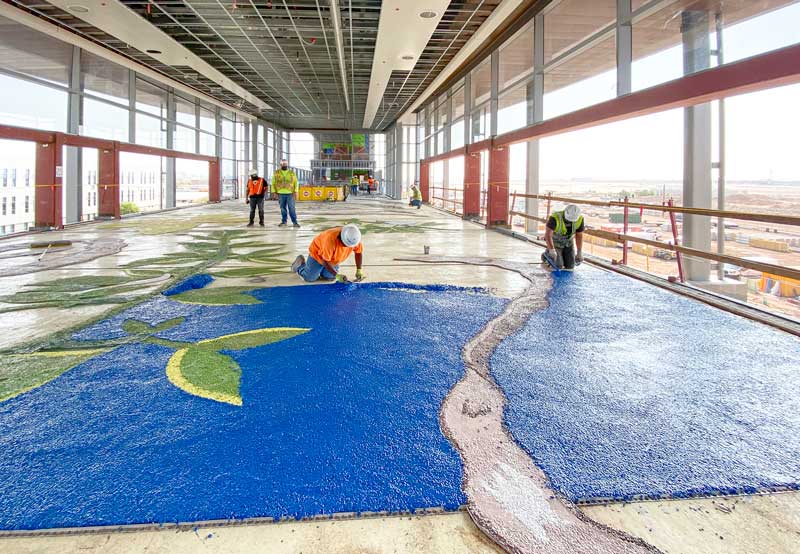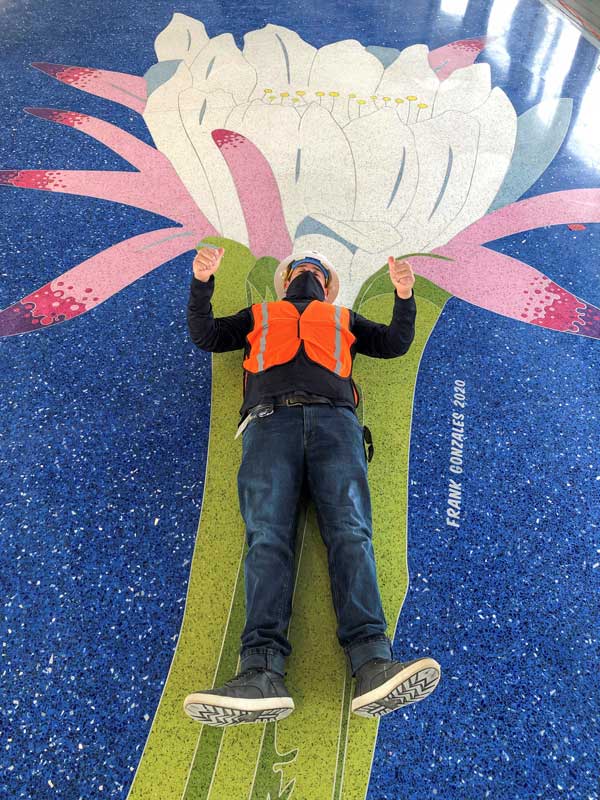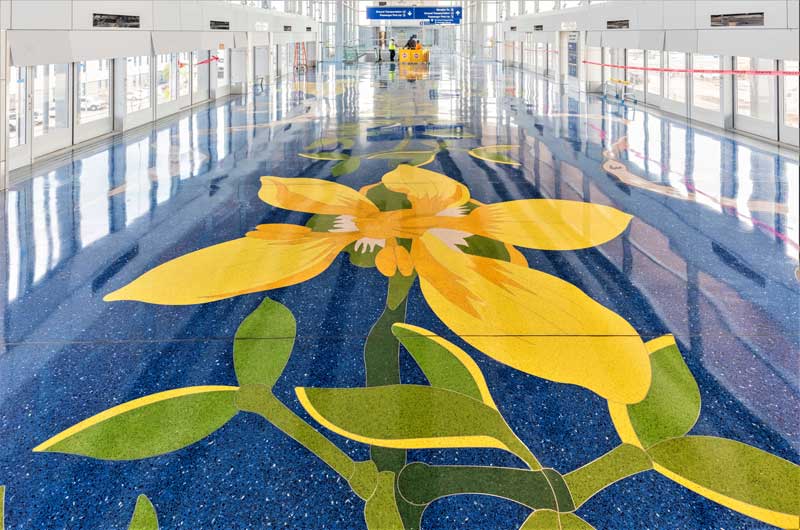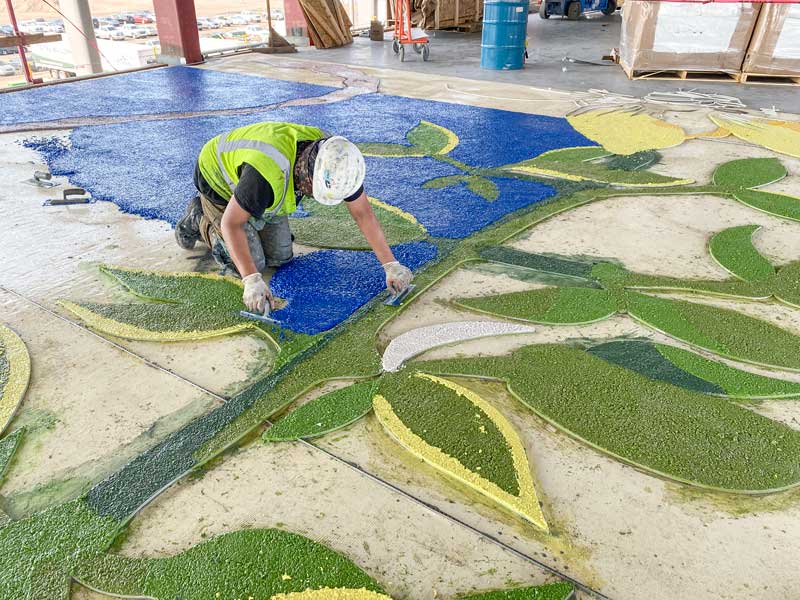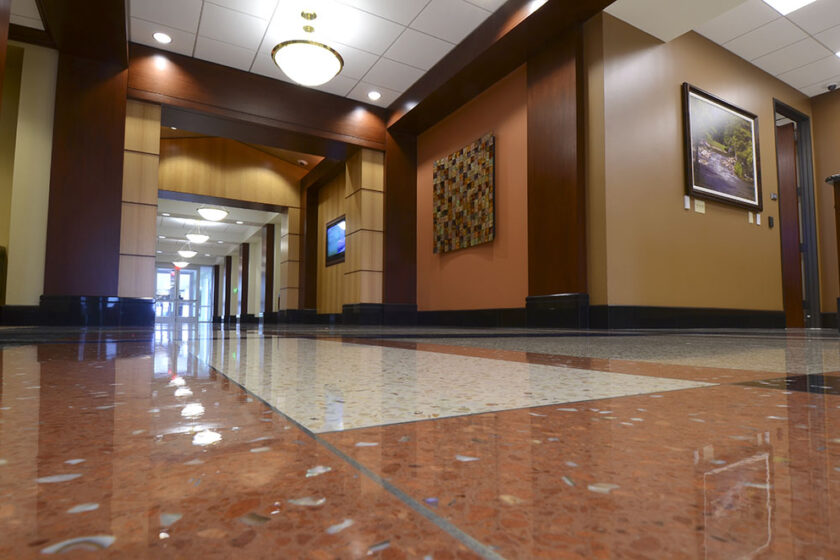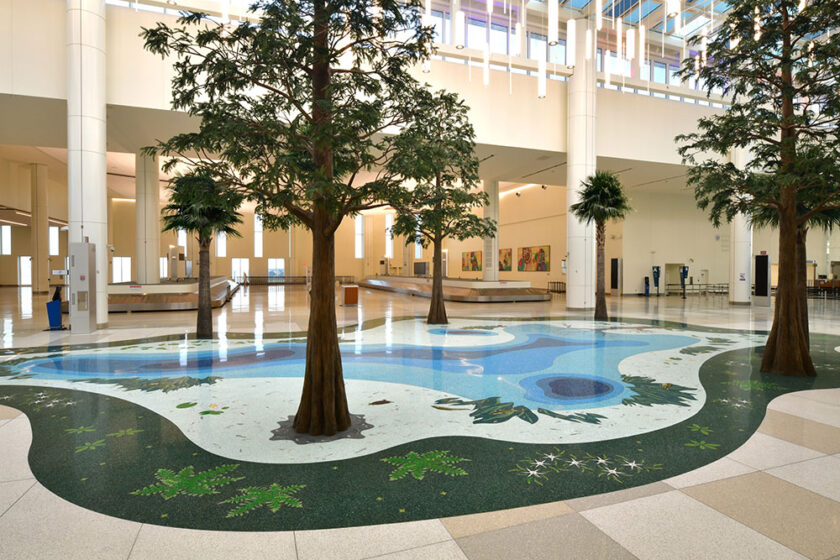Phoenix Sky Train Station Public Art a Tribute in Terrazzo To Indigenous Peoples & Sonoran Desert
With the help of the city’s public art program, the Phoenix Sky Harbor International Airport is using the unique qualities of terrazzo to enhance the passenger experience with works of art that are beautiful, durable, and pay homage to local indigenous peoples.
Frank Gonzales is one of the local artists commissioned to design the latest terrazzo platforms. His creation at the 24th Street station reflects the beauty of the Sonoran Desert, whose landscape is viewable to passengers with the station’s open design.
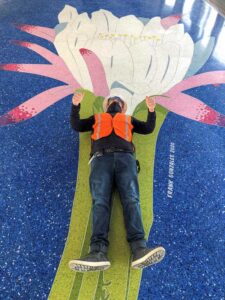
Frank Gonzales is one of the local artists commissioned to design the latest terrazzo platforms. His creation at the 24th Street station reflects the beauty of the Sonoran Desert, whose landscape is viewable to passengers with the station’s open design.
“Many of these natural elements were revered for their sustainability and healing properties by my ancestors and indigenous cultures for centuries,” Gonzales said. “I wanted to use this platform to give homage to these people and to the natural elements that make the Sonoran Desert a magical place.”
Sustainably designed and built, the second phase of Phoenix Sky Harbor International Airport Sky Train system is LEED Gold-certified, advancing the airport’s ambitious green building goals. The 2021 additions to the system also netted the airport its first Envision Gold Award from the Institute of Sustainable Infrastructure.
A distinguished tradition of public art at Phoenix Sky Harbor continues with two new masterpieces in epoxy terrazzo, displayed on the most recent additions to the Sky Train system. The latest installations integrated in the station platforms are a 2022 National Terrazzo & Mosaic Association (NTMA) Honor Award recipient. They join the airport museum’s extensive permanent art collection, which includes the NTMA 2013 and 2015 Jobs of the Year, also found on light rail station platforms.
The platform design was Gonzales’ first public art project. With his studio painting background, he had never worked with terrazzo or designed a project on such a scale. He credits the team at Advance Terrazzo of Phoenix, the contractor on the project, for walking him through the process.
The terrazzo artisans worked creatively with the designer to preserve the integrity of his artistic vision on the durable, low-maintenance work of art. For example, in the flowers, Gonzales wanted to create the effect of a watercolor painting, explained Bruce Thornham of Advance Terrazzo.
After explaining the difficulty of achieving the consistency the artist was hoping for in terrazzo, the contractor developed an innovative color solution: a series of waterjet-cut terrazzo dots in different colors. When arranged in the floor, the dots created the illusion of the desired blend of colors.
